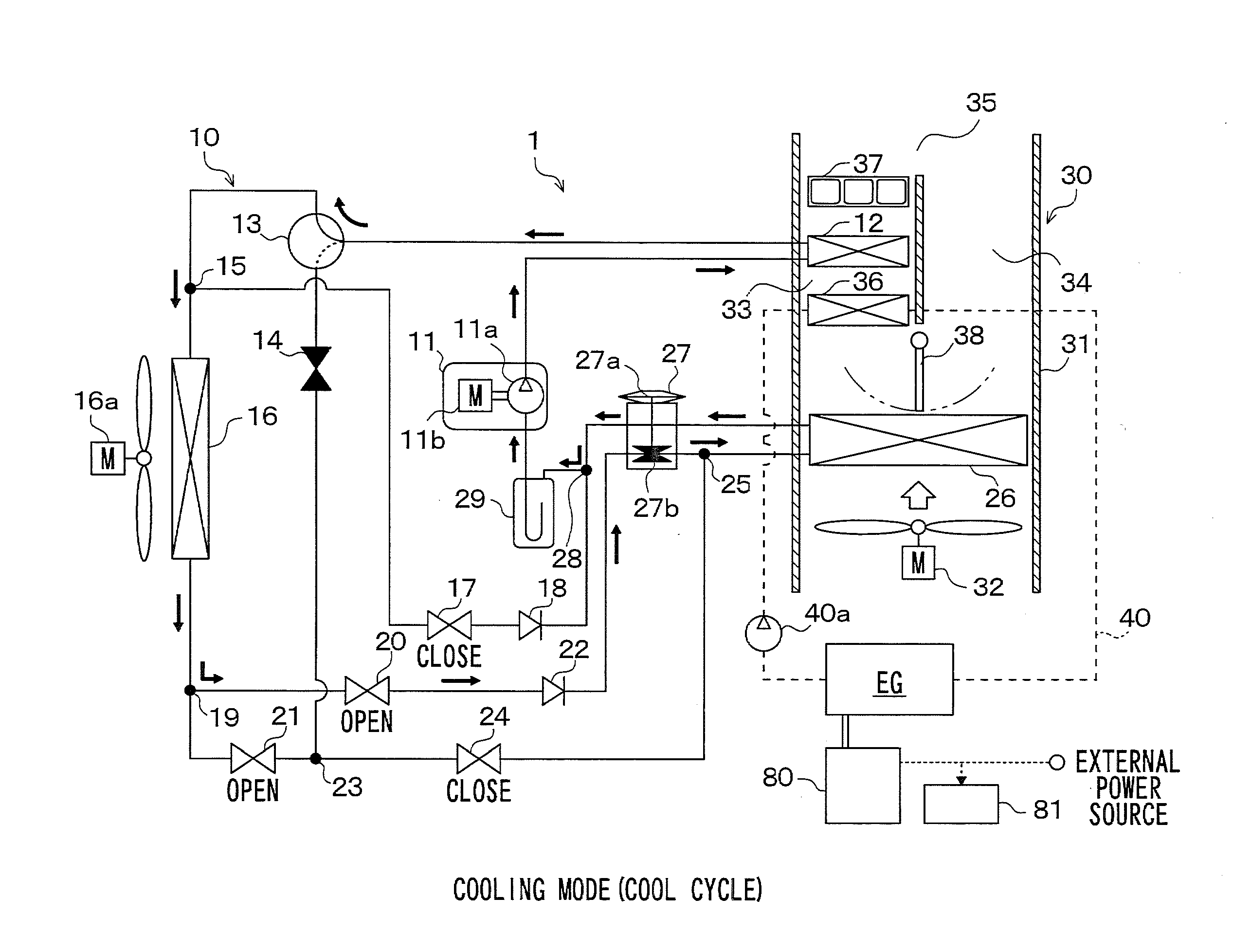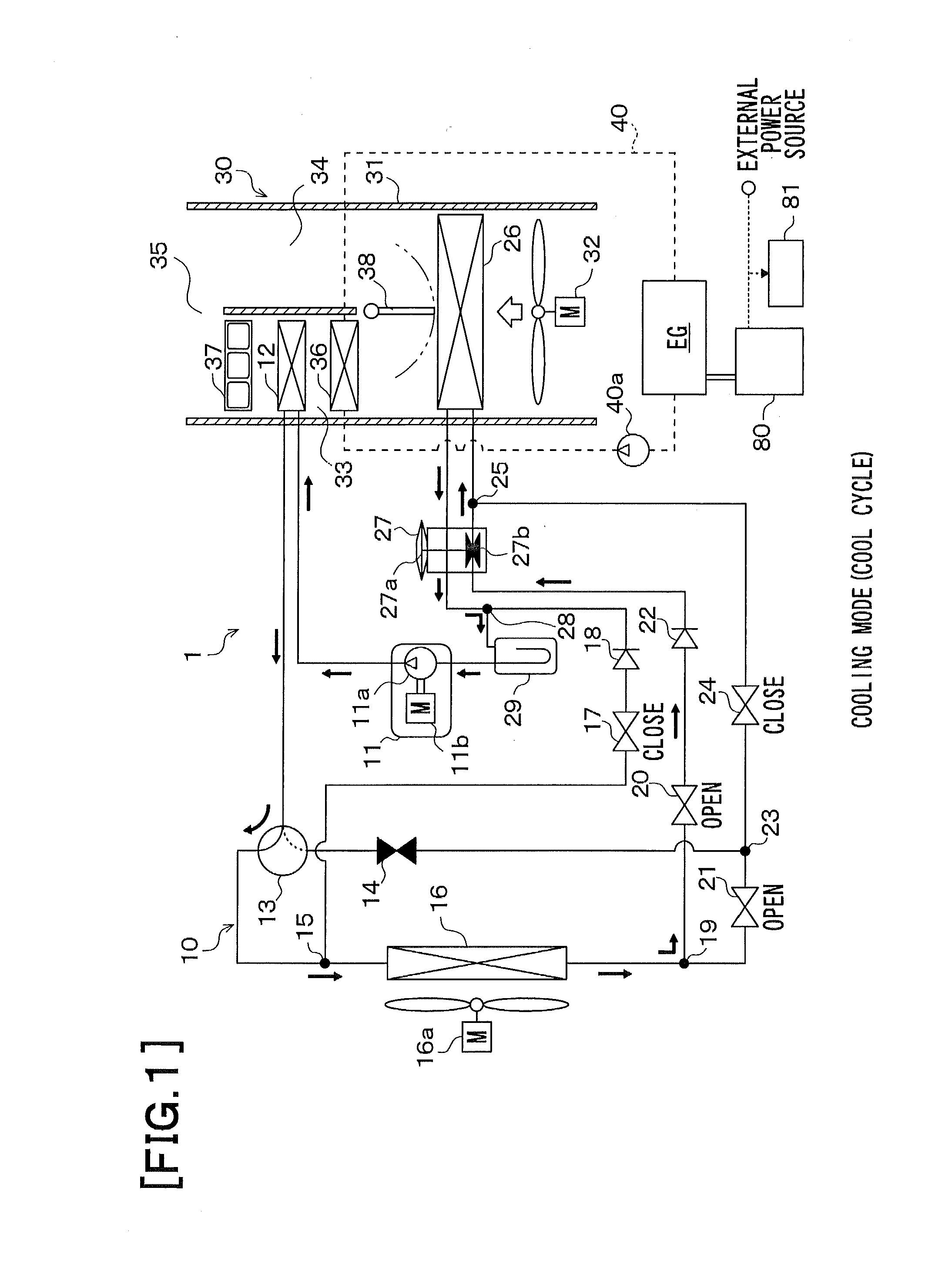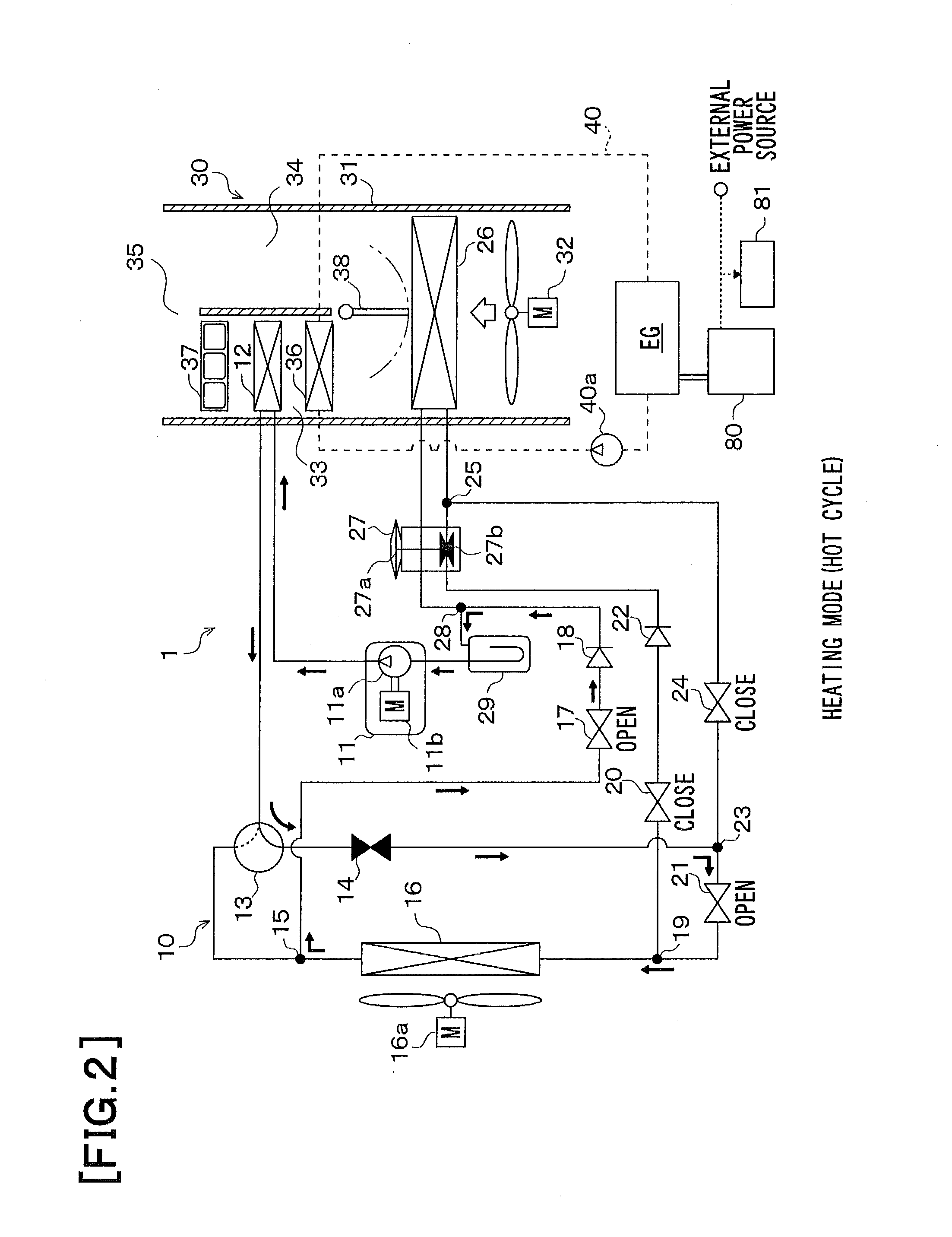Air conditioner for vehicle
a technology for air conditioners and vehicles, applied in the direction of machines/engines, process and machine control, instruments, etc., can solve the problems of vehicle occupants feeling unwarmed, and achieve the effects of reducing the power consumption of the blower, reducing the availability factor, and saving power
- Summary
- Abstract
- Description
- Claims
- Application Information
AI Technical Summary
Benefits of technology
Problems solved by technology
Method used
Image
Examples
first embodiment
[0026]A first embodiment of the present invention will now be described with reference to FIGS. 1 to 11. FIGS. 1 to 4 are diagrams illustrating the overall configuration of an air conditioner for a vehicle according to the first embodiment. FIG. 5 is a block diagram illustrating an electrical control section of the air conditioner for a vehicle 1. In the present embodiment, the air conditioner for a vehicle is applied to a hybrid vehicle that acquires a driving force for running the vehicle from an internal combustion engine EG and from a driving electric motor.
[0027]The hybrid vehicle according to the present embodiment is a so-called plug-in hybrid vehicle capable of charging its battery 81 with electricity supplied from an external power source (commercial power source) while the vehicle is stopped. If the battery 81 is charged by the external power source while the vehicle is stopped before running so that the amount of electrical power remaining in the battery 81 is not smaller...
second embodiment
[0194]A second embodiment of the present invention will now be described with reference to FIG. 12. The second embodiment is obtained by modifying the control aspect of the blower 32 according to the first embodiment, which is described earlier.
[0195]The control aspect of the blower 32 according to the second embodiment will be described below with reference to FIG. 12. FIG. 12 is a flowchart illustrating a control process that corresponds to the control process shown in FIG. 8, which depicts the first embodiment. First of all, step S721 is performed to determine whether the auto switch on the operation panel 60 is turned on, as is the case with the first embodiment. If the determination result obtained in step S721 does not indicate that the auto switch is turned on, processing proceeds to step S722. Step S722 is performed to determine the blower motor voltage that provides an air flow rate desired by the occupant, which is set by the air flow rate setup switch on the operation pan...
third embodiment
[0246]The refrigeration cycle 10 employed in the foregoing embodiments is configured so that the refrigerant circuits for the cooling mode, the heating mode, the first dehumidification mode, and the second dehumidification mode can be selectively used. However, the refrigeration cycle 10 used in a third embodiment of the present invention does not have a function for selecting various refrigerant circuits, as shown in FIG. 13.
[0247]More specifically, the refrigeration cycle 10 according to the third embodiment is formed by circularly connecting the compressor 11, the outdoor heat exchanger 16, the thermostatic expansion valve 27, and the indoor evaporator 26 in the order named. The refrigeration cycle 10 according to the present embodiment functions to cool the air to be blown into the passenger compartment from the blower. In other words, the refrigeration cycle 10 according to the present embodiment is configured to be capable of providing the cooling mode of the foregoing embodim...
PUM
 Login to View More
Login to View More Abstract
Description
Claims
Application Information
 Login to View More
Login to View More - R&D
- Intellectual Property
- Life Sciences
- Materials
- Tech Scout
- Unparalleled Data Quality
- Higher Quality Content
- 60% Fewer Hallucinations
Browse by: Latest US Patents, China's latest patents, Technical Efficacy Thesaurus, Application Domain, Technology Topic, Popular Technical Reports.
© 2025 PatSnap. All rights reserved.Legal|Privacy policy|Modern Slavery Act Transparency Statement|Sitemap|About US| Contact US: help@patsnap.com



